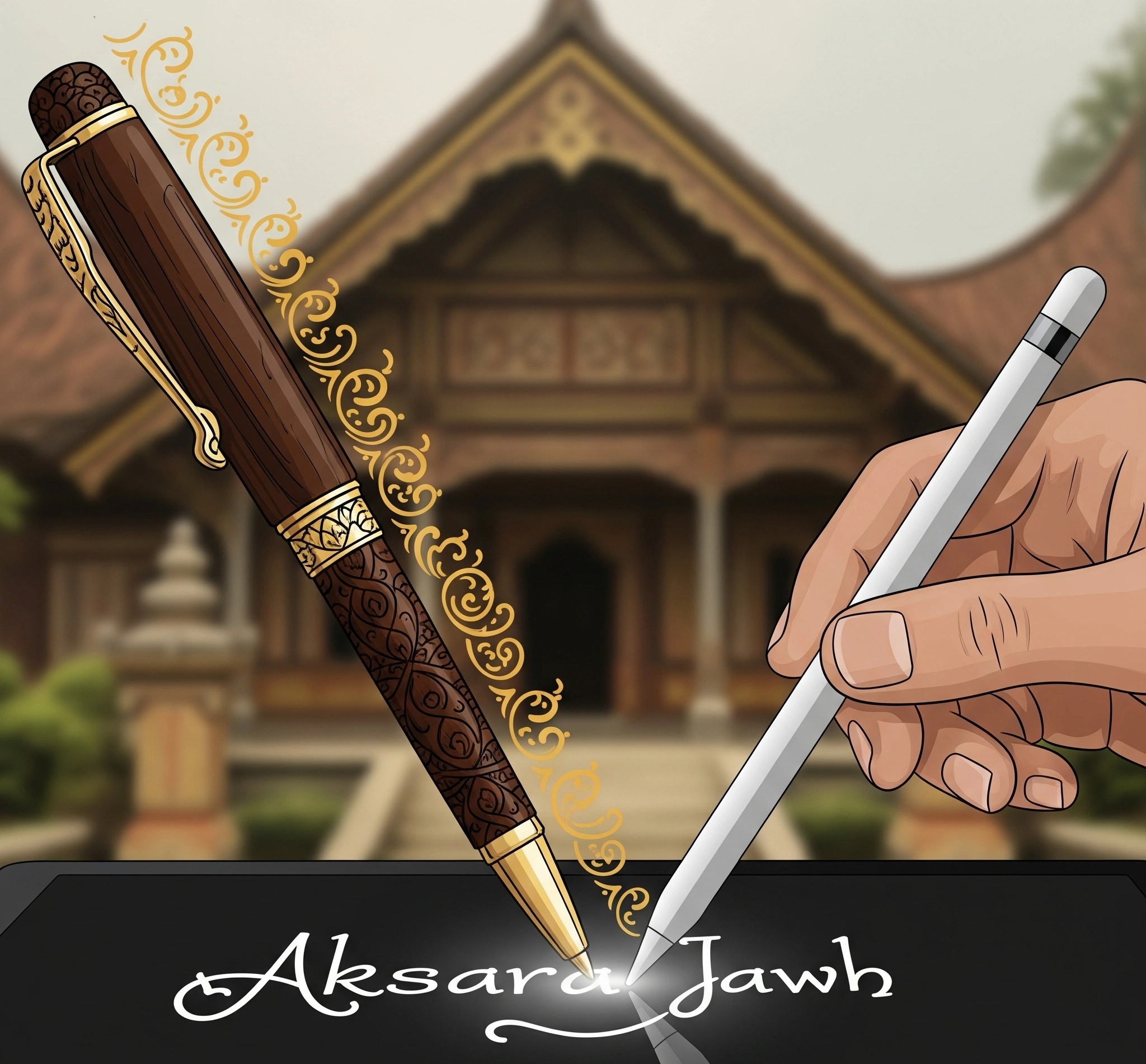The Ancient Whisper: A Timeless Quest for Peace

In a world rapidly accelerating with digital transformation, we often find ourselves looking back. We seek to understand the foundations of our knowledge and culture. Ancient scripts, like **Aksara Jawa**, are not mere relics of the past. Instead, they represent profound systems of thought and cultural transmission. However, their preservation in the digital age poses a significant challenge. How do we ensure these intricate and beautiful writing systems continue to thrive and remain accessible? This article delves into Aksara Jawa, exploring its rich history, complex structure, and its enduring relevance today. We will also examine strategies for its revitalization in our modern, technology-driven society.
Kejawen’s Foundation: Deconstructing Its Core Beliefs
Aksara Jawa, also known as Hanacaraka, is far more than just a set of characters. It is a fundamental component of Javanese identity and cultural heritage. Its origins trace back to the Kawi script, a derivative of the ancient Brahmi script from India. Over centuries, it evolved on the island of Java, adapting to the nuances of the Javanese language. This script serves as a testament to the sophisticated literary traditions that flourished in the region.
The core architecture of Aksara Jawa is an **abugida** system. This means each consonant inherently carries a vowel sound, typically /a/. Diacritics, called *sandhangan*, modify these inherent vowels. Furthermore, the script features *pasangan*, special conjunct forms that suppress the inherent vowel of the preceding consonant when forming a consonant cluster. This intricate design allows for a fluid and compact representation of spoken Javanese. The script also includes specific characters for numbers (*angka*) and unique punctuation marks (*pranada*). Together, these elements form a comprehensive writing system capable of expressing the full breadth of Javanese thought and literature.
An illustrative diagram showing the fundamental components and structure of Aksara Jawa.
The Fabric of Practice: Understanding Kejawen’s Ecosystem
Historically, Aksara Jawa played a pivotal role in the intellectual and spiritual life of Java. Scribes meticulously inscribed it onto various media. These included palm-leaf manuscripts (*lontar*), paper (*daluang*), and stone inscriptions (*prasasti*). Monasteries, royal courts, and religious institutions served as primary hubs for its use and preservation. Through this script, invaluable literary works, historical chronicles, spiritual texts, and philosophical treatises were documented and transmitted across generations. The script thus became a direct conduit for cultural memory.
In traditional Javanese society, mastering Aksara Jawa was a mark of erudition and social standing. It signified access to knowledge and a deep connection to ancestral wisdom. However, the widespread adoption of the Latin script during the colonial era and the subsequent national language policies significantly impacted its daily use. Today, Aksara Jawa faces considerable challenges in maintaining its widespread relevance. Its ecosystem of implementation has shrunk. Schools primarily teach it as part of local content, limiting its practical function in everyday communication. This shift raises crucial questions about preserving such an essential cultural artifact in the modern world.
Experiencing Kejawen: A Practitioner’s Journey
Consider the journey of Pak Harjo, a retired school teacher from Surakarta. For decades, he championed the teaching of Aksara Jawa, often feeling like a lone voice against the tide of modernization. Pak Harjo himself learned the script from his grandfather, who transcribed traditional *wayang kulit* (shadow puppet) stories into notebooks using intricate Aksara Jawa calligraphy. He recalls the painstaking process of forming each character, feeling a deep connection to his ancestors with every stroke.
Years ago, Pak Harjo initiated a small community project. He aimed to digitize old family documents written in Aksara Jawa. The project faced numerous technical hurdles. Many existing digital fonts for Aksara Jawa were incomplete or rendered ligatures (pasangan) incorrectly on standard word processors. Text often appeared garbled or misaligned. Pak Harjo spent countless hours meticulously correcting these digital errors, sometimes resorting to manual image editing. He recounted one particularly frustrating instance where a critical historical date, written with a complex combination of *pasangan* and *sandhangan*, simply would not render correctly across different software platforms. “It was like trying to speak in a beautiful ancient tongue, but the microphone kept breaking,” he lamented, pointing to a distorted digital rendition of a family tree on his old laptop. This personal struggle highlights the practical obstacles faced by those striving to bridge the gap between this ancient script and modern technology.
A screenshot illustrating common rendering issues of Aksara Jawa in standard digital text editors, showcasing broken ligatures and misplaced diacritics.
The Core Revelation: Unveiling Unique Insights
Beyond its aesthetic beauty and historical value, Aksara Jawa offers a unique window into Javanese philosophical thought. Its structured, syllabic nature reflects a worldview that emphasizes balance and interconnectedness. The system of *pasangan* and *sandhangan* creates a fluid, organic flow of characters. This mirrors the Javanese concept of *harmoni* (harmony) and *selaras* (alignment) in all aspects of life. Learning Aksara Jawa, therefore, becomes more than just acquiring a new writing skill. It means internalizing a particular way of perceiving language and, by extension, reality itself. This often goes unmentioned in general introductions to the script.
Furthermore, Aksara Jawa holds untapped potential in the digital realm. While current digital implementations face challenges, a fully functional and widely adopted digital Aksara Jawa could revolutionize access to ancient texts. It could also empower new forms of cultural expression. Imagine a future where Javanese youth can seamlessly text, tweet, or create digital art using their ancestral script. This would not only preserve the script but also infuse it with new life and relevance, transcending its current status as primarily an academic or ceremonial tool.
Practical Wisdom: A Framework for Adaptive Action
Revitalizing Aksara Jawa in the digital age requires a multifaceted, strategic approach. We cannot simply rely on traditional methods; we must adapt them to contemporary realities. Here’s a framework for adaptive action:
- **Standardized Digital Encoding and Fonts:** The foundational step involves robust and universally compatible digital encoding (e.g., Unicode standardization) and high-quality, open-source fonts. This ensures consistent rendering across all platforms, addressing issues like those Pak Harjo faced.
- **Accessible Educational Tools:** Develop engaging, user-friendly digital applications and online platforms for learning Aksara Jawa. Gamification, interactive exercises, and AI-powered tutors can make learning appealing to younger generations.
- **Integration into Mainstream Digital Platforms:** Advocate for the inclusion of Aksara Jawa keyboards and font options in major operating systems and popular social media applications. This mainstream integration can dramatically increase daily exposure and use.
- **Content Creation and Digital Literacy:** Encourage content creators to produce diverse digital content in Aksara Jawa, including e-books, news articles, and social media posts. Simultaneously, promote digital literacy within communities to utilize these resources effectively.
- **Community Engagement and Collaboration:** Foster collaborations between cultural institutions, academics, developers, and local communities. Hackathons, workshops, and translation projects can bring diverse expertise together to drive innovation and adoption.

A symbolic bridge: traditional Javanese pen transforming into a digital stylus, representing the modern efforts to preserve Aksara Jawa.
FUTURE VISION & AUTHOR BIO
Aksara Jawa represents a profound cultural legacy, a living testament to Javanese intellectual and spiritual depth. Its journey from ancient manuscripts to the digital screen is a microcosm of humanity’s ongoing quest to preserve heritage in an evolving world. By strategically embracing technology and fostering communal efforts, we can ensure this beautiful script not only survives but flourishes. We can empower new generations to connect with their roots, unlocking the wisdom embedded within each character. The future of Aksara Jawa lies in bridging the past and the present, transforming it from a historical curiosity into a vibrant, living language in the digital age.